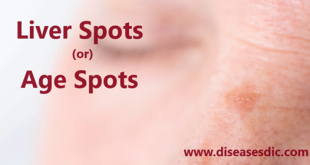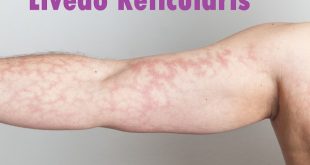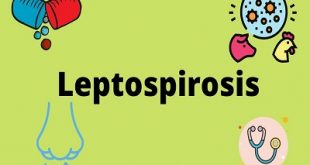What is leprosy?
Leprosy, also known as Hansen’s disease (HD), is a chronic infectious disease caused by a Mycobacterium (Mycobacterium leprae) affecting especially the skin and marginal nerves. It is characterized by the formation of nodules or macules that enlarge and spread with loss of sensation and eventually paralysis, wasting of muscle, and production of deformities called also Hansen’s disease.
This infection is caused by the bacteria Mycobacterium leprae and Mycobacterium lepromatosis. It is primarily a granulomatous disease of the peripheral nerves and mucosa of the upper respiratory tract, skin lesions are the primary external sign. If left untreated, leprosy can be progressive, causing permanent damage to the skin, nerves, limbs and eyes.
Mycobacterium leprae
Classification
Leprosy can be categorized by type and number of skin areas affected:
- Paucibacillary: ≤ 5 skin lesions with no bacteria detected on samples from those areas
- Multibacillary: ≥ 6 skin lesions, bacteria detected on samples from skin lesions, or both
Leprosy can also be classified by cellular response and clinical findings:
- Tuberculoid: People with tuberculoid leprosy typically have a strong cell-mediated response, which limits disease to a few skin lesions (paucibacillary), and the disease is milder, less common, and less contagious.
- Lepromatous
- Borderline
People with lepromatous or borderline leprosy typically have poor cell-mediated immunity to M. leprae and have more severe, systemic infection with widespread bacterial infiltration of skin, nerves, and other organs (eg, nose, testes, kidneys). They have more skin lesions (multibacillary), and the disease is more contagious.
In both classifications, the type of leprosy dictates long-term prognosis, likely complications, and duration of antibiotic treatment.
Historical information
The earliest possible account of a disease that many scholars believe is leprosy appears in an Egyptian Papyrus document written around 1550 B.C. Around 600 B.C. Indian writings describe a disease that resembles leprosy. In Europe, leprosy first appeared in the records of ancient Greece after the army of Alexander the Great came back from India and then in Rome in 62 B.C. coinciding with the return of Pompeii’s troops from Asia Minor.
In 1873, Dr. Gerhard Henrik Armauer Hansen of Norway was the first person to identify the germ that causes leprosy under a microscope. Hansen’s discovery of Mycobacterium leprae proved that leprosy was caused by a germ, and was thus not hereditary, from a curse, or from a sin.
Global epidemiology
Leprosy remains a serious health problem in developing countries, and in 1988 was estimated by the World Health Organization (WHO) to affect some 10-12 million people worldwide, a figure which has changed little over the last 20 years.” The number of registered cases, however, which is based on more reliable data, has steadily increased over this period, from 2.85 million in 1966, to 3.6 million in 1976, and 5.4 million in 1985.” More than 70% of these registered leprosy cases reside in South-East Asia, most notably India, and it is in these countries that leprosy poses the greatest problems. Interestingly, since 1985 the number of registered cases has begun to decrease for the first time, from 5.4 million in 1985 to 5.1 million in 1987.
What causes leprosy?
Leprosy is caused mainly by Mycobacterium leprae, a rod-shaped bacillus that is an obligate intracellular (only grows inside of certain human and animal cells) bacterium. M. leprae is termed an “acid fast” bacterium because of its chemical characteristics.
How leprosy is spread?
- The disease is probably transmitted from the lining of the nose of a person with the infection to the skin and respiratory tract of another person.
- Close and frequent contact is required for transmission but only a small proportion of close contacts, for example, in the same household, actually develop leprosy.
- A contact is any person who has been close enough to an infected person to be at risk of having acquired the infection from that person.
Complications
- The most severe complications result from the peripheral neuropathy, which causes deterioration of the sense of touch and a corresponding inability to feel pain and temperature.
- Patients may unknowingly burn, cut, or otherwise harm themselves. Repeated damage may lead to loss of digits.
- Muscle weakness can result in deformities (eg, clawing of the 4th and 5th fingers caused by ulnar nerve involvement, foot drop caused by peroneal nerve involvement).
- Papules and nodules can be particularly disfiguring on the face.
Other areas of the body may be affected:
Feet: Plantar ulcers with secondary infection are a major cause of morbidity, making walking painful.
Nose: Damage to the nasal mucosa can result in chronic nasal congestion and nosebleeds and, if untreated, erosion and collapse of the nasal septum.
Eyes: Iritis may lead to glaucoma, and corneal insensitivity may lead to scarring and blindness.
Sexual function: Men with lepromatous leprosy may have erectile dysfunction and infertility. The infection can reduce testosterone and sperm production by the testes.
Kidneys: Amyloidosis and consequent renal failure occasionally occur in lepromatous leprosy.
- Disfiguration of the face
- Muscle weakness
- Permanent damage to the nerves of the brain.
Symptoms and signs
Symptoms mainly affect the skin, nerves, and mucous membranes (the soft, moist areas just inside the body’s openings).
The disease can cause skin symptoms such as:
- A large, discolored lesion on the chest of a person with Hansen’s disease.
- Discolored patches of skin, usually flat, that may be numb and look faded (lighter than the skin around)
- Growths (nodules) on the skin
- Thick, stiff or dry skin
- Painless ulcers on the soles of feet
- Painless swelling or lumps on the face or earlobes
- Loss of eyebrows or eyelashes
Symptoms caused by damage to the nerves are:
- Numbness of affected areas of the skin
- Muscle weakness or paralysis (especially in the hands and feet)
- Enlarged nerves (especially those around the elbow and knee and in the sides of the neck)
- Eye problems that may lead to blindness (when facial nerves are affected)
Symptoms caused by the disease in the mucous membranes are:
- A stuffy nose
- Nosebleeds
Since Hansen’s disease affects the nerves, loss of feeling or sensation can occur. When loss of sensation occurs, injuries such as burns may go unnoticed. Because you may not feel the pain that can warn you of harm to your body, take extra caution to ensure the affected parts of your body are not injured.
If left untreated, the signs of advanced leprosy can include:
- Paralysis and crippling of hands and feet
- Shortening of toes and fingers due to reabsorption
- Chronic non-healing ulcers on the bottoms of the feet
- Blindness
- Loss of eyebrows
- Nose disfigurement
Other complications that may sometimes occur are:
- Painful or tender nerves
- Redness and pain around the affected area
- Burning sensation in the skin
How is leprosy diagnosed?
- If you have a suspicious skin sore, your doctor will remove a small sample of the abnormal skin and send it to a laboratory to be examined. This is called a skin biopsy.
- A skin smear test may also be done. With paucibacillary leprosy, no bacteria will be detected. In contrast, bacteria are expected to be found on a skin smear test from a person with multibacillary leprosy.
- Your doctor may also perform a lepromin skin test to determine the form of leprosy.
- Your doctor will inject a small amount of leprosy-causing bacteria into the skin, typically on the upper forearm. People who have tuberculoid or borderline tuberculoid leprosy will experience irritation at the injection site.
What is the treatment for leprosy?
Management of leprosy is aimed at stopping infection and minimizing potential physical deformities.
- Antibiotics used first-line to eliminate organisms include dapsone, rifampicin, fluoroquinolones, macrolides, rifampin and clofazimine.
- Varying regimens with multidrug therapy (MDT) are used depending on the type of leprosy and the severity of infection.
- This may be a combination of two or three antibiotics given over varying lengths of time (up to years). Other antibiotics include minocycline, ofloxacin and clarithromycin.
- Oral corticosteroids and thalidomide are helpful in preventing nerve damage by reducing swelling. Long courses are necessary to decrease severity of deformities and disabilities.
- Anti-inflammatory drugs are used to control nerve pain and damage related to leprosy. This may include steroids, such as prednisone.
- Patients with leprosy may also be given thalidomide, a potent medication that suppresses the body’s immune system. It helps treat leprosy skin nodules. Thalidomide is known to cause severe, life-threatening birth defects and should never be taken by women who are pregnant or women who may become pregnant.
- Surgery may sometimes be used to drain abscesses to restore nerve function, reconstruct collapsed nose, or to improve function or appearance of affected areas.
- Patient education is paramount. Leprosy can be cured but it is essential to take the full course of medication. It is no longer infectious once treatment has begun.
- Patients should be instructed how to deal with existing nerve damage for example protecting numb feet from injury.
- Physical, social and psychological rehabilitation is a necessary for those in whom neglected disease has caused havoc.
Leprosy Prevention
The prevention of leprosy ultimately lies in the early diagnosis and treatment of those individuals suspected or diagnosed as having leprosy, thereby preventing further transmission of the disease to others.
- Public education and community awareness are crucial to encourage individuals with leprosy and their families to undergo evaluation and treatment with MDT.
- Household contacts of patients with leprosy should be monitored closely for the development of leprosy signs and symptoms.
- A study demonstrated that prophylaxis with a single dose of rifampicin was 57% effective in preventing leprosy for the first two years in individuals who have close contact with newly diagnosed patients with leprosy.
- There is currently no widely used standard for using medications for the prevention of leprosy.
- Currently, there is no single commercial vaccine that confers complete immunity against leprosy in all individuals.
- Several vaccines, including the BCG vaccine, provide variable levels of protection against leprosy in certain populations.
 Diseases Treatments Dictionary This is complete solution to read all diseases treatments Which covers Prevention, Causes, Symptoms, Medical Terms, Drugs, Prescription, Natural Remedies with cures and Treatments. Most of the common diseases were listed in names, split with categories.
Diseases Treatments Dictionary This is complete solution to read all diseases treatments Which covers Prevention, Causes, Symptoms, Medical Terms, Drugs, Prescription, Natural Remedies with cures and Treatments. Most of the common diseases were listed in names, split with categories.








yeah is quite a dangerous disease and it require sensitization among our people within our member states. stay safe.
wow!
God bless
complete picture about handed disease. Best education and good advice. Thank you for your efforts.
I want to know disease and it’s medication.
Please consult a doctor to get more information regarding medications for this disease.
wow so nice thanks alot
Information about disease very useful but required more about Management of Reaction in Leprosy explain in detail
lepra reaction,medication etc information add in this note
Thank you for your comment. we will upload it very soon.
Keep supporting us and share our app with your colleagues.